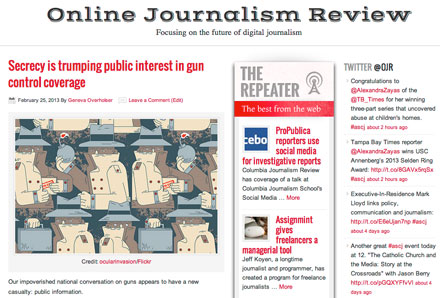
A newsroom on Sunday. Are more newsrooms starting to look like this on weekdays? (Credit: Alan Cleaver/Flickr/Creative Commons License
Newsroom staffs have dipped to their lowest levels since 1978, while audiences abandon once-trusted media outlets, which are no longer providing the news and information they want, according to the latest doom-and-gloom report on the journalism industry.
Newsroom cutbacks in 2012 reduced the industry by 30 percent since its peak in 2000, leaving fewer than 40,000 full-time professional employees, according to the Pew Research Center’s State of the News Media report for 2013.
The effects of these cutbacks on the news product are similarly dramatic. Sports, weather, and traffic now equal 40 percent of the content on local television news, and stories are getting shorter. Cable outlets have reduced their live coverage by 30 percent because of diminished crews, while live interview time has increased to fill the gap.
Meanwhile, more news outlets are turning to computer-generated journalism using algorithms from Narrative Science to transform data into stories.









